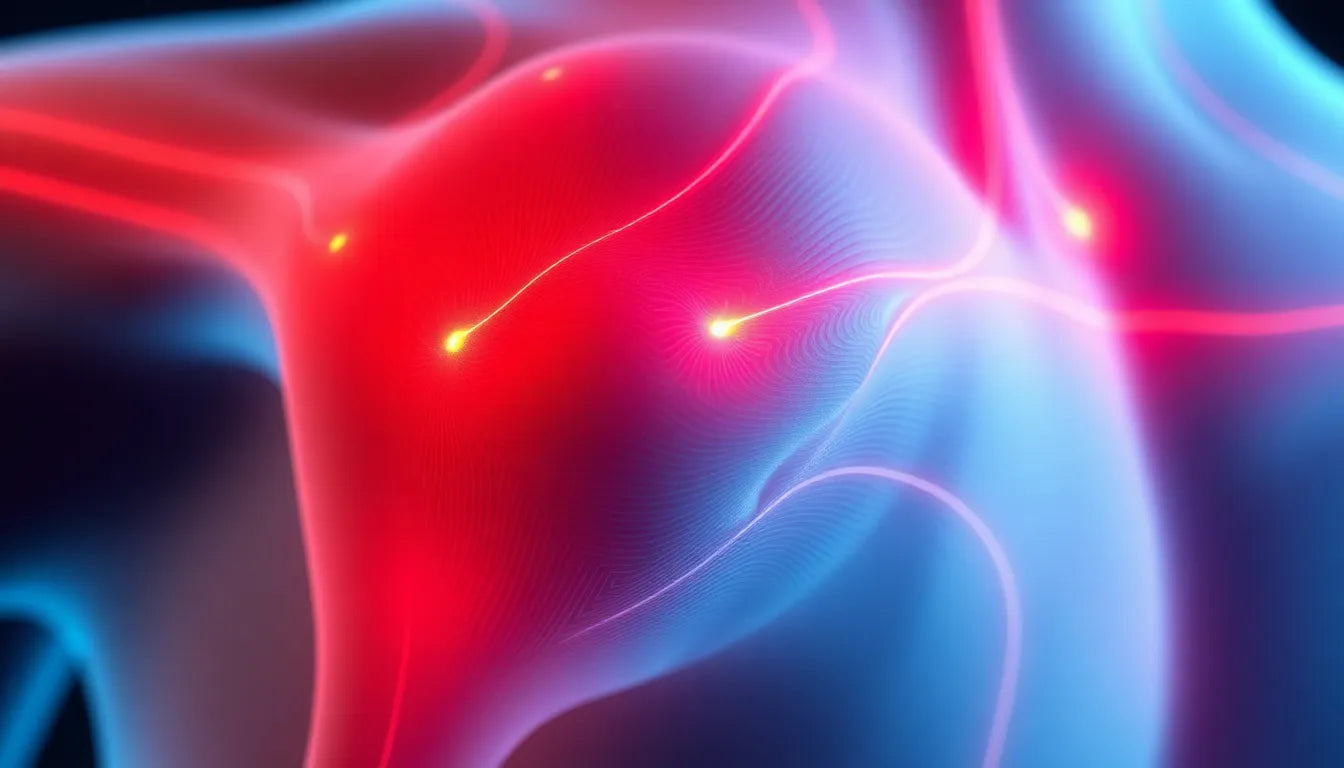For those grappling with persistent back pain, understanding the underlying causes and potential solutions is crucial. A herniated disc, often referred to as a slipped or ruptured disc, is a common spine issue that can significantly affect daily life. This condition occurs when the soft center of a spinal disc pushes through a crack in the tougher exterior casing. While some herniated discs cause no symptoms, others can press on nearby nerves, leading to pain, numbness, or weakness in an arm or leg.
Understanding herniated disc symptoms
The symptoms of a herniated disc can vary depending on the location of the disc and the severity of the herniation. Common symptoms include sharp or burning pain, which may radiate from the back to the arms or legs, tingling or numbness in the affected area, and muscle weakness. These symptoms can disrupt daily activities and significantly affect one's quality of life. When conservative treatments such as physical therapy, medications, or lifestyle changes fail to provide relief, surgical intervention may become a necessary consideration.
Exploring surgical options for herniated discs
Traditionally, surgical methods like discectomy have been employed to alleviate the symptoms of a herniated disc. These procedures involve removing the damaged portion of the disc to relieve pressure on the nerves. While effective, traditional surgeries often come with longer recovery times and more significant post-operative discomfort. However, the landscape of herniated disc treatment is evolving with the advent of minimally invasive surgical techniques.
The promise of minimally invasive surgery
Minimally invasive surgery represents a significant leap forward in the treatment of herniated discs. These advanced techniques offer several benefits over traditional methods, including reduced recovery time, less post-operative pain, and fewer complications. By utilizing smaller incisions and causing less disruption to the surrounding tissues, minimally invasive procedures allow patients to return to their daily routines more quickly. This transformation in surgical practice poses an intriguing question: How are these new techniques reshaping patient experiences and outcomes? As we delve deeper into the world of minimally invasive solutions, we uncover the potential for these innovations to revolutionize herniated disc surgery.
traditional surgical approaches for herniated disc
When conservative treatments for a herniated disc fail to provide relief, traditional surgical options have been the go-to solutions for many patients. Among these, a diskectomy is one of the most common procedures. According to Mayo Clinic, this surgery involves removing the damaged portion of the disc that is pressing on the nerves, thereby alleviating pain and other symptoms. Patients can expect a hospital stay, followed by a recovery period that involves physical therapy to regain strength and mobility. While effective, diskectomy typically requires a longer recovery time compared to newer techniques.
Another prevalent traditional method is the microdiscectomy. As detailed by the Hospital for Special Surgery (HSS), this procedure is a refined version of diskectomy, utilizing a smaller incision and often involving a laminotomy—a technique that removes a small portion of the vertebral bone to access the disc. The use of imaging techniques during surgery enhances precision, making microdiscectomy a popular choice for lumbar herniated discs. Despite its minimally invasive nature compared to open surgery, it still involves some recovery time and potential discomfort.
advancements in minimally invasive techniques
The evolution of surgical techniques has brought about minimally invasive options that offer significant advantages over traditional methods. One such advancement is the minimally invasive lumbar discectomy. As highlighted by Johns Hopkins Medicine, this procedure involves smaller incisions, reducing tissue disruption and thereby minimizing post-operative pain. Patients benefit from a quicker recovery, often returning to normal activities much sooner than with traditional surgery.
Another cutting-edge approach is the endoscopic discectomy. Yale Medicine describes this as the least invasive surgical option available for a herniated disc. By using an endoscope, surgeons can perform the procedure through even smaller incisions, which reduces recovery time and post-operative discomfort. This method is particularly appealing for patients seeking a swift return to their daily routines with minimal surgical impact.
emerging and innovative procedures
Beyond traditional and minimally invasive techniques, new and innovative procedures are emerging in the field of herniated disc surgery. One such option is artificial disc replacement. According to Healthline, this surgery is considered when preserving more natural spine movement is a priority. Unlike spinal fusion, which limits mobility, artificial disc replacement allows for a greater range of motion post-surgery, potentially leading to better overall outcomes for patients.
Another promising technique is laser disc repair, which is gaining attention for its minimally invasive nature. Deuk Spine emphasizes the benefits of this approach, claiming higher success rates and faster recovery times compared to traditional surgeries. By using laser technology to remove or reshape the disc material, this method reduces the need for larger incisions and extensive recovery periods.
As these innovative procedures continue to develop, they offer exciting possibilities for patients seeking relief from herniated disc symptoms. The shift towards minimally invasive solutions not only enhances patient experiences but also underscores the importance of consulting with healthcare professionals to determine the most suitable surgical option based on individual needs and circumstances.
Comparing surgical options for herniated disc
When considering surgery for a herniated disc, patients often weigh the benefits and limitations of traditional versus minimally invasive procedures. Understanding these differences is crucial for making informed decisions. Traditional surgeries like diskectomy and microdiscectomy involve larger incisions, which can lead to longer recovery times and increased post-operative discomfort. In contrast, minimally invasive techniques, such as minimally invasive lumbar discectomy and endoscopic discectomy, utilize smaller incisions, resulting in reduced tissue disruption and quicker recovery.
Here is a concise comparison to highlight key aspects:
| Aspect | Traditional Surgery | Minimally Invasive Surgery |
|---|---|---|
| Incision Size | Larger | Smaller |
| Recovery Time | Longer | Shorter |
| Pain Levels | Higher | Lower |
| Potential Risks | Higher | Lower |
According to WebMD, the choice between these options should be guided by the severity of the condition, patient health, and specific medical advice. Consulting with a healthcare professional is essential to determine the most appropriate course of action.
Patient-centered considerations
When contemplating herniated disc surgery, several patient-centered factors must be considered. These include the patient's overall health, the severity of symptoms, and the failure of conservative treatments. Moreover, patient education plays a pivotal role in setting realistic expectations. Understanding the surgical process, potential outcomes, and recovery timelines can significantly enhance patient satisfaction.
Healthcare providers emphasize the importance of a thorough consultation to tailor surgical options to individual needs. This personalized approach ensures that patients receive the most effective treatment while minimizing risks and maximizing recovery potential.
The future of herniated disc surgery
The trend towards minimally invasive techniques is reshaping the landscape of herniated disc surgery. These advancements not only improve patient outcomes but also enhance the overall surgical experience by reducing pain, recovery time, and complications. As technology continues to evolve, the focus remains on delivering patient-centered care that prioritizes safety and effectiveness.
Ultimately, choosing the right surgical option involves a collaborative decision-making process between the patient and their healthcare team. By staying informed and consulting with professionals, patients can navigate their treatment options confidently and achieve the best possible outcomes.
Frequently Asked Questions
What is a herniated disc, and how does it affect the body?
A herniated disc occurs when the soft inner core of a spinal disc pushes through a tear in its outer layer. This can compress nearby nerves, leading to symptoms such as pain, numbness, or weakness, which can significantly impact daily activities and quality of life.
When should surgery be considered for a herniated disc?
Surgery is typically considered when conservative treatments, such as physical therapy and medication, fail to alleviate symptoms. Candidates for surgery often experience persistent pain, significant nerve compression, or functional impairments.
What are the benefits of minimally invasive surgery compared to traditional methods?
Minimally invasive surgery offers several advantages, including reduced recovery time, less post-operative pain, smaller incisions, and fewer complications. These benefits make it an appealing option for many patients.
How long is the recovery period after herniated disc surgery?
Recovery time varies depending on the type of surgery and individual patient factors. Traditional surgeries may require several weeks to months, while minimally invasive procedures often allow for a quicker return to normal activities within weeks.
Are there any risks associated with minimally invasive procedures?
While minimally invasive procedures generally have lower risk profiles, potential risks include infection, bleeding, and nerve damage. However, these risks are typically lower compared to traditional surgeries.
What should patients expect before, during, and after surgery?
Before surgery, patients undergo pre-operative assessments and consultations. During surgery, they can expect precise, targeted intervention. Post-operatively, patients should follow recovery guidelines, which may include physical therapy and activity modifications to ensure optimal healing.
Sources
- Mayo Clinic. "Diskectomy Overview."
- Hospital for Special Surgery. "Microdiscectomy."
- Healthline. "Herniated Disc Surgery: What to Expect."
- Johns Hopkins Medicine. "Minimally Invasive Lumbar Discectomy."
- WebMD. "When Do I Need Surgery for a Herniated Disk?"
- Deuk Spine. "Herniated Disc Surgery: Recovery, Risks & Benefits."
- Yale Medicine. "A Minimally Invasive Fix for a Herniated Disc."























